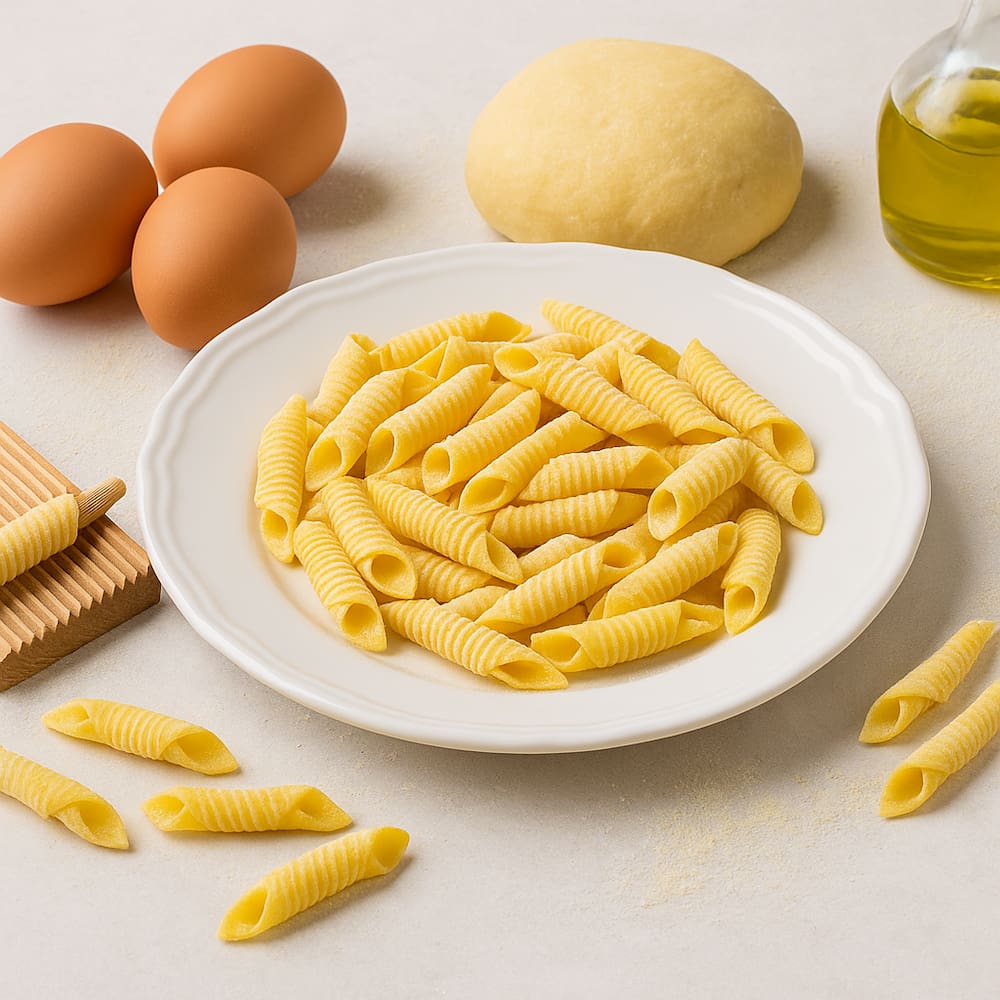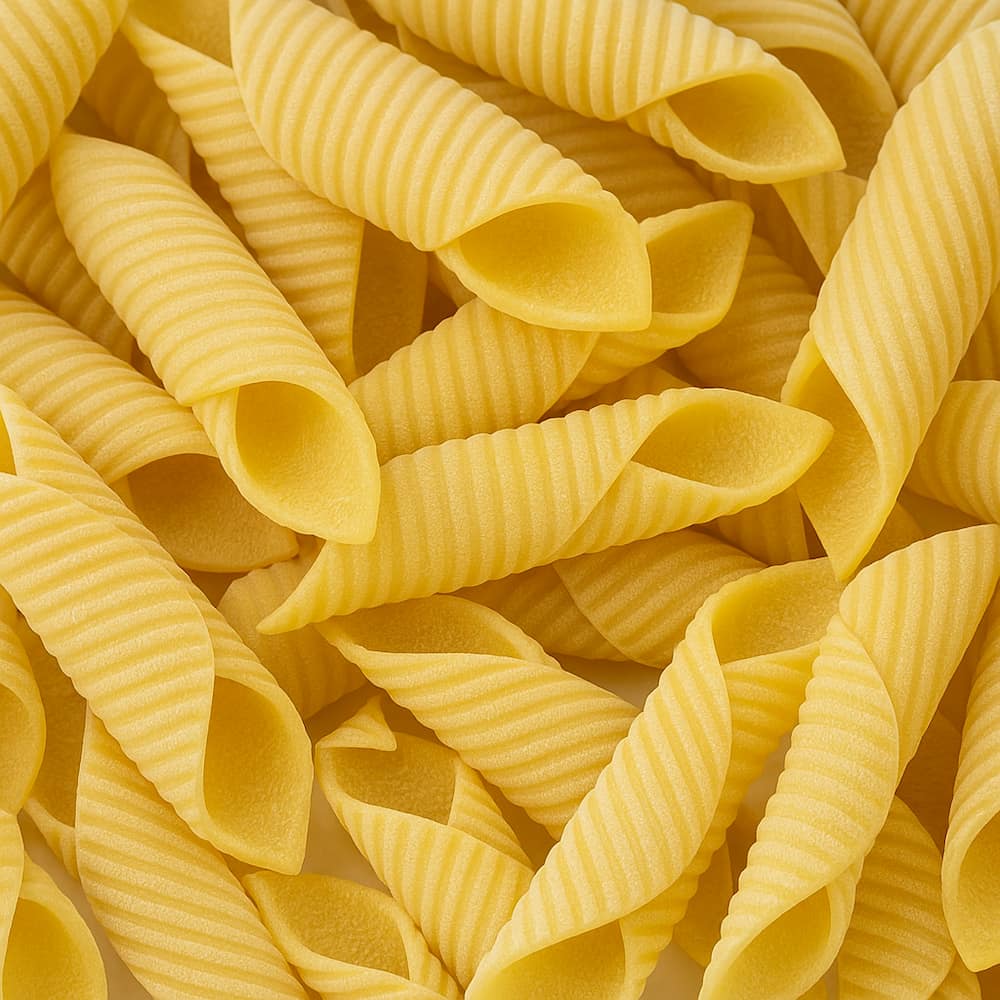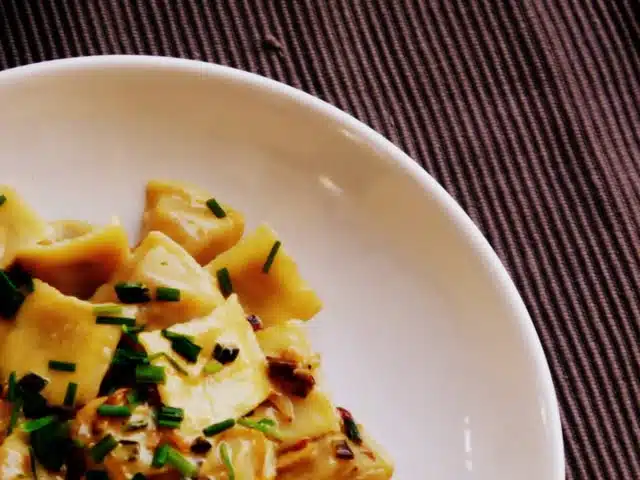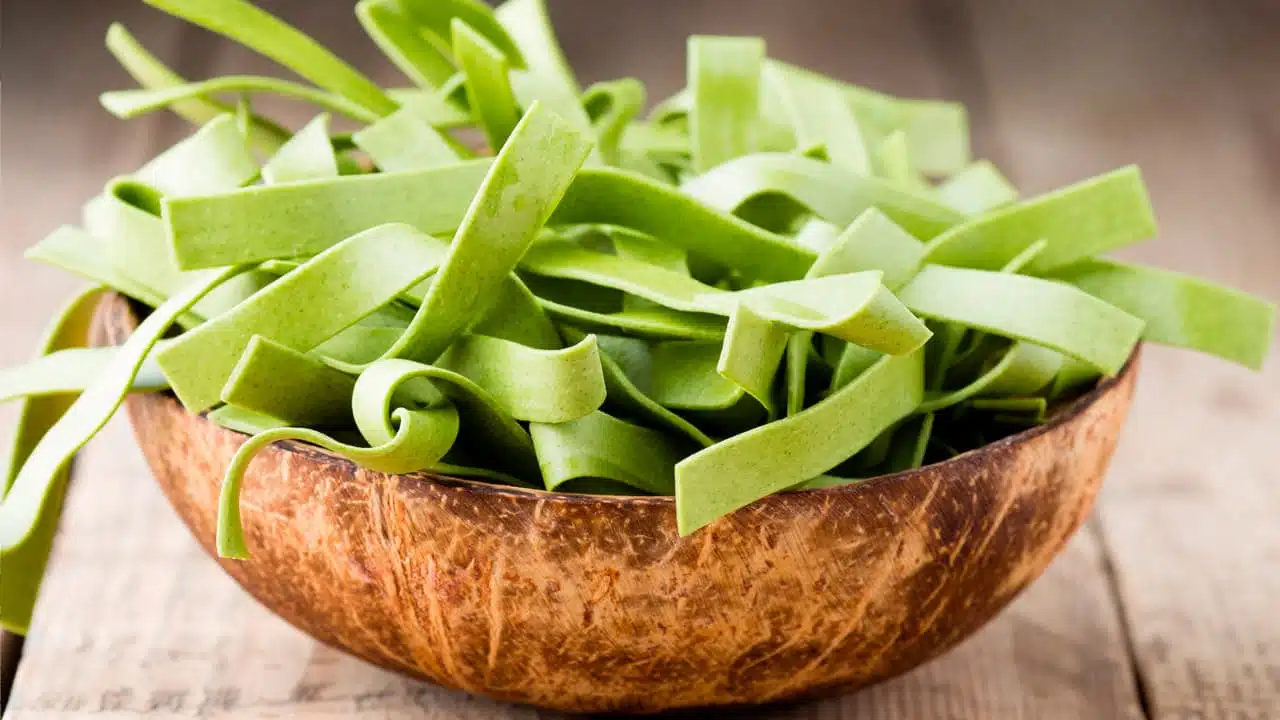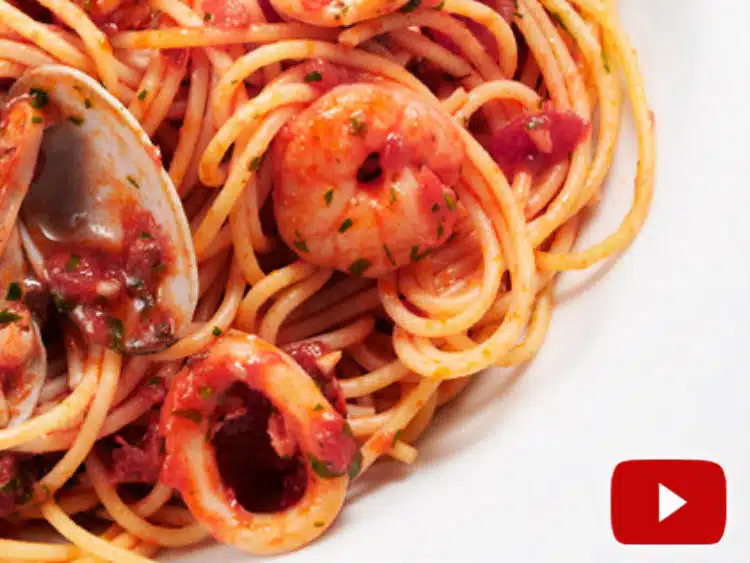Hello dear and dear, welcome to Paulina Cuisine! Prepare to fall in love with a paste that, although not as well known as the classics noodles or the ravioli, deserves its place in the Olympus of the Pasta: we are talking about the Garganelli .
It looks like a surname, right? But it's beautiful noodles. At first glance, these noodles seem penne with stretch marks, but this is one of those pastes that are born from the ritual of kneading and rolling with patience ... and with a little help from a grooved board.
In this note we are going to tell you all about homemade Garganelli : from how to make the dough, to what salsa for Garganelli it is convenient to prepare. So let's cook. Because if there is something that gives more happiness than eating pasta ... is to do it with our own hands, don't you think?
Content table
About the Garganelli
The Garganelli are a homemade paste that is done with a simple dough of flour 0000 and eggs , is cut into squares, is rolled in a tube -shaped and passes through a grooved table (or whatever at home) so that it has those divine stripes that capture the entire sauce.
And why stretch marks? Well, it's not just aesthetics: those marquitas are key for the sauce to adhere to desire and not compile, as who does not want to commit.
The difference with the Penne is precisely that: the eggs to the egg are homemade, rolled one by one, while the Penne leave industrialized and cut to the bies. One is handmade, the other is a mounting line . Nothing against the Penne, but here we are talking about love with mass.
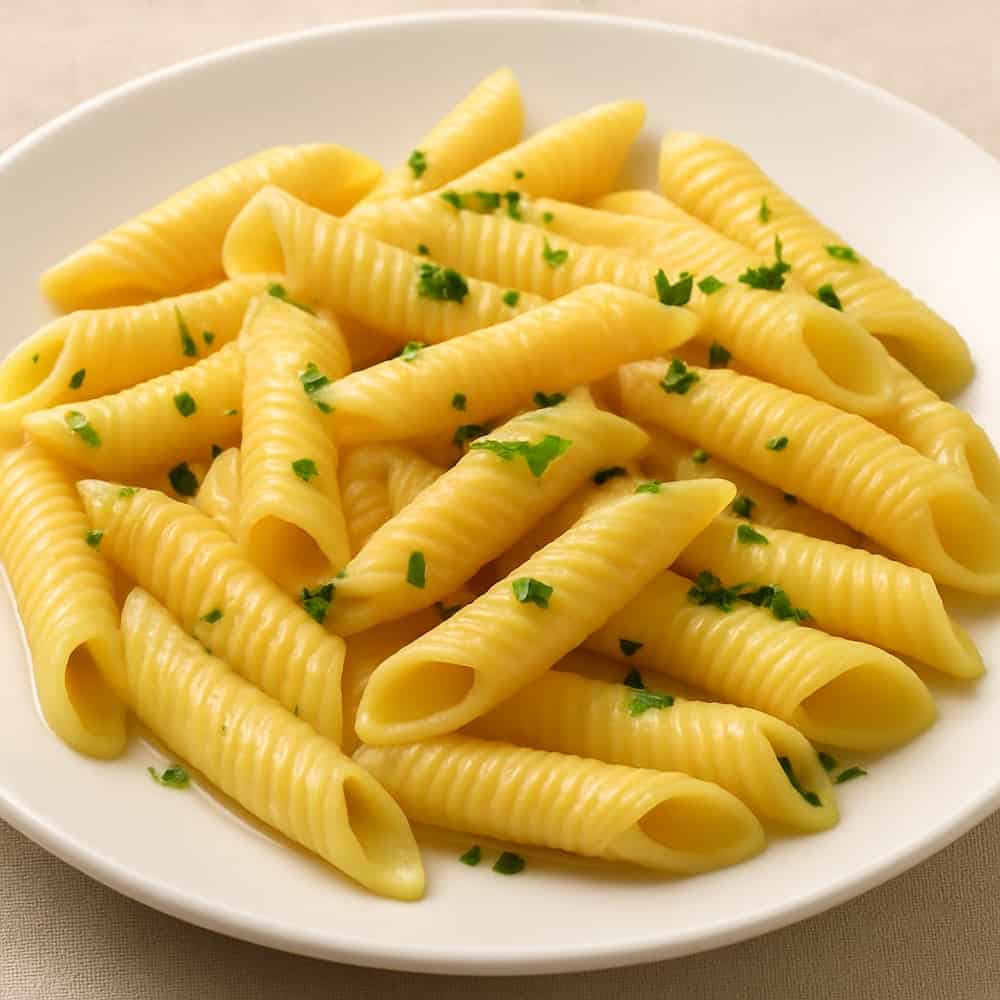
Emilia-Romaña's kitchen and the origin of the Garganelli
Like so many jewels of Italian gastronomy, the Garganelli come from the Emilia-Romaña , the cradle of handmade paste , the Reggian Parmigian and other delights that make us salivate just to name them.
The story says that there in the 18th century , in the kitchen of a Countess (because, the pasta also have lineage), a cook improvised this shape when he ran out of molds to make Cappelletti.
He rolled the dough in the form of a tub and squeezed it against a wooden loom comb: thus the Maccheroni al Pettine that, although it lends itself to confusion, it is actually the denomination of the pastes that are prepared with this technique, among which the Garganelli .
Characteristics of homemade garganelli
- Rolled and artisanally striated form: each Garganelli is formed by hand, rolling a square of dough in a stick and pressing on a grooved surface. That gives it its tubular shape and its classic stripes, which are not decorative: they are functional to catch the sauce.
- Egg dough: Unlike other dry pastes, eggs to egg are made with fresh paste to the egg , which gives them a softer, elastic texture and a much richer and more homeless taste.
- Perfect texture for sauces: thanks to their stretch marks , they are ideal for creamy sauces , thick ragús and everything that wants to get stuck. No slippery sauces that go to the bottom of the plate: here the pasta and the sauce are a happy marriage.
- Handmade paste (and patience): There is no way to do Garganelli without giving hand. They are not cut with a machine or manufactured in series: they require time, practice and much love. It is a ritual, not an express recipe.
- Versatility: Although it is associated with well Italian sauces, the Garganelli recipe is super versatile. This paste combines well with local ingredients such as portobello fungi, bacon, cream, even a criollo pesto of arugula and nut .
- They require simple (or improvised) tools: the famous Pettine for Garganelli can be a difficult utensil to achieve, but it can be replaced with things that are already in the kitchen: a grater, a sushi mat, a boom for ñoquis or even a fork . With ingenuity, everything is possible.
- Rustic and elegant aspect at the same time: they are not all the Garganelli paste is the same, and that is perfect. Their irregular and homemade appearance makes them look artisanal, but at the same time, they have a sophisticated air that makes them protagonists of any dish.

Salsa options for the Garganelli recipe
- Ragú (of meat, lamb, pork)
- Fungus sauce (such as mushroom sauce) and cream
- Rustic pesto with nuts
- Deribted and pepper cheese sauces
- Sage and butter sauce (simple but glorious)
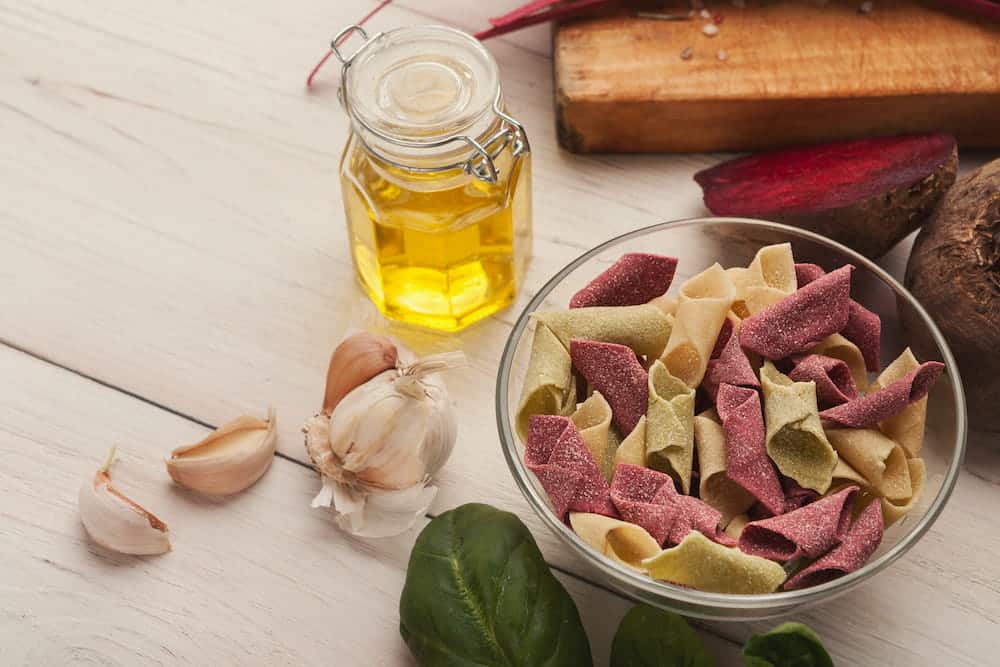
10 steps to cook and keep Garganelli
- Using flour mixture 0000 and Semolín improves texture and flavor.
- Knead with desire : 10 minutes minimum.
- Let the dough stand yes or yes. Change everything.
- No Machine is missing: with kneading stick you can.
- Work from a batches so that the dough does not dry.
- Sprinkle with Semolín and let the Garganelli dry about 30 minutes, so that it does not disarm when taking them to the pot.
- Boil in abundant salt water for 2 to 3 minutes if they are fresh. Do not pass!
- They can dry in the air for a few hours and save in a bottle for a week.
- They can also freeze on a tray , and once hard, save in the stock market. Boil direct from the freezer so that they do not stick.
- If they disarm the boiling, they are very fine or badly sealed . To practice!
Follow on Instagram ( here )
and on YouTube that I upload new recipes every week ( click here )
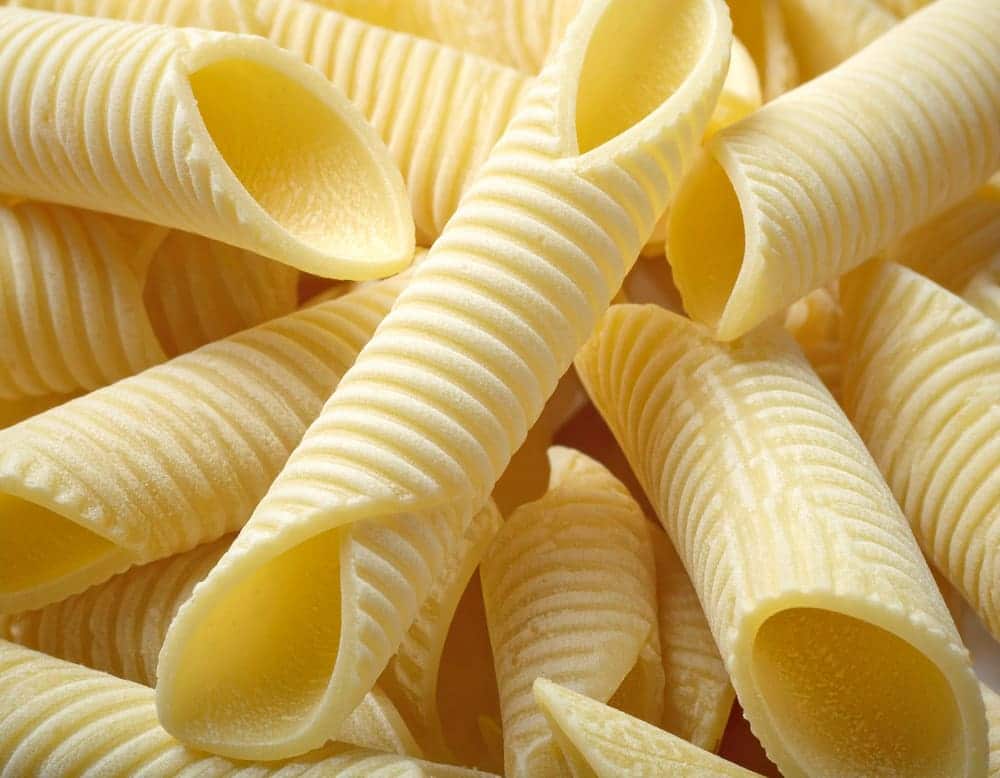
Garganelli recipe
Yields: 4 portions
Preparation time: 1 hour and 30 minutes (taking into account rest)
Ingredients
- 200 g of flour 0000
- 100 g of hard wheat semolole (or semolin)
- 3 big eggs
- A pinch of salt
- Extra semolla to sprinkle
- A splash of olive oil (optional)
How to make Step by Step by step
- On the table, form a volcano with the flour and the semolina mixed. Cascar the eggs in the center and add a pinch of salt.
- Slightly beat the eggs with a fork, and incorporate the flour and semolina little by little from the edges to the center.
- Knead about 10 minutes until you have a smooth, firm and elastic dough. If it is very dry, you can add some water (from teaspoons). If desired, incorporate olive oil during kneading.
- Form a bun, wrap in plastic film and let stand 30 minutes at room temperature.
- Sprinkle the surface of the table with extra semolina. Stretch the dough with kneading stick or pasta machine (Pastalinda), until it is fine but manageable.
- Cut into 4 × 4 cm squares. Let dry a few minutes to make it easier to roll.
- Roll each tube -shaped square, using a wooden spoon handle, a similar sushi stick or utensil.
- Press on a grooved surface (Pettine de Garganelli, grater, holder or ñoquis table) to form the stretch marks.
- Arrange the Garganelli on a floured reviewer. Let dry from 20 to 30 minutes.
- Boil the paste in abundant water with boiling salt, for 2 to 3 minutes. Drain with a slide and serve with the chosen sauce.
